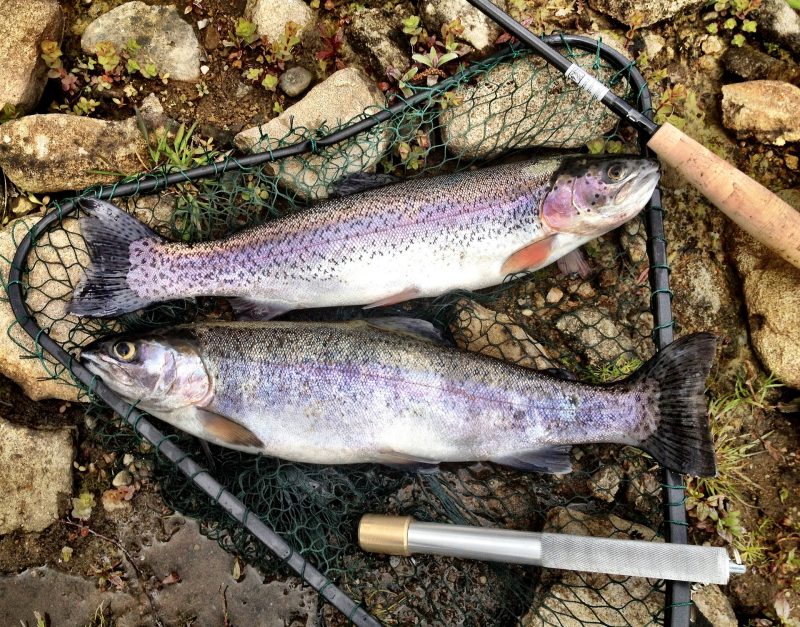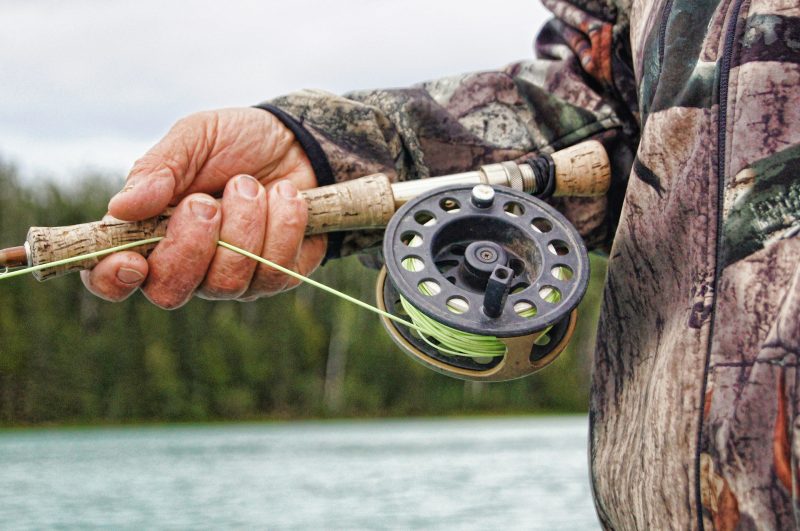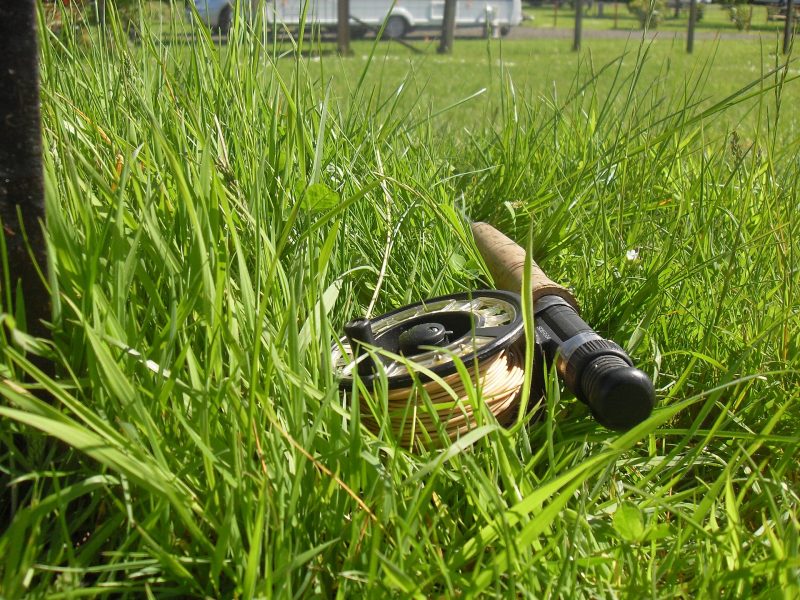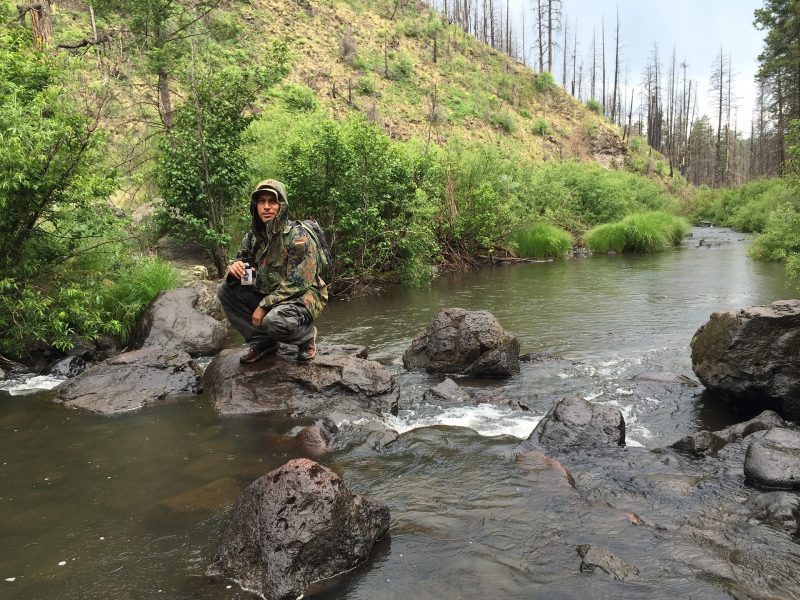Fly Fishing: Tips on how to get started

Fly fishing is amazing to watch. It seems to have kind of grace and rhythm to it that is so different than standard fishing. Before you jump the gun and buy yourself a large pair of waders and try to match the characters from A River Runs Through It, you should know what you are getting yourself into first.
When you get to looking at all of the equipment that is out there for fly fishing, it can feel overwhelming, but we are here to help you out with that.
Take a class

See where the closest fly shop is. Generally, these shops will offer classes to teach new fishermen how fly-fishing works. They will give you all of the basic information, which should include how to tie a knot, how to cast, and what gear you need. Though as it would be a shop that sells the gear, you may want to cross-reference what they recommend to ensure you are not just spending money you did not need to spend.
Naturally, if you have a friend or family member who fly-fishes already, you may want to go to him or her first. But a professional would cover everything in the right way, which you may not get from someone you know personally.
Decide what you are fishing for
What kind of fish are you aiming to get? The type of fish near you or the kind that you would like to catch may require not just a specific bait, but also a specific type of fly fishing rod to ensure you will get the fish you want.

Get the right equipment
Once you know what you are going to try to catch, you should get the equipment to match. Basic fly fishing equipment includes:
- Fly fishing rod: Based on the type of fish you are going for, you will, of course, need a rod to get the whole show running.
- Fly reel: This holds your fishing line.
- Fishing line: The strength of the line will depend on the type of fish that you are aiming to catch.
- Backing: Since you only have so much line on the rod in order to effectively fly fish, you need backing. Backing comes into play when your fish has grabbed the fly and runs off with it, giving you an extra 200 feet or so.
- Leader and tippet: This is what connects the fly to your line. Not technically necessary, but it will keep your line straight.
- Flies: These are not real flies, but synthetic flies made to make fish think they are real flies. In reality, they hold up much better than real flies.
- Fishing vest: You need somewhere to hold extra flies, phone, nippers, sunscreen, and all those things you like to carry.
- Waders: If you are standing in a river, waders will keep you both dry and warm.
Fishing license
You really can’t go out and actually start to fish if you are not doing it legally. Go to your local license agent, which is sometimes at your local sporting goods store. Here, you should also find out what dates and locations allow for fly fishing to ensure that you are within the right window. There may also be some regulations on types of bait used, so be sure to ask what the rules are to make sure you are doing everything as legally as possible.

Practice
After you have either binged-watched some YouTube videos, taken a class, or had an amazing friend or relative take you under his or her wing, you need to get in some practice before you can set out on your own. Take your rod out to a lawn or field (never do this on asphalt) and begin the work to find your fly fishing rhythm. It is important to use soft grass or ground so you do not wreck your brand new line before you have even had a chance to use it for its intended purpose. Since there are so many different casting methods for fly fishing out there, you need to hone in and find the one that works best for you. Sometimes it is just how your arm works, but you really do need to find a way to cast that is comfortable.
Once you have decided which casting method works for you, you can work on your aim. Using a marker of some kind, like a hula hoop can help you learn to be more precise with your casting and learn to aim where the fish are hiding. Just like in a standard cast, you can easily get your fishing line tangled in a tree, so being able to place your line where you want it is important. Since casting a fly fishing rod is so different than a standard rod, you need to get it out of your head so you don’t get stuck.

Think camo
I am sure you are wondering why a fishermen/ fisherwomen might want to blend in with his or her surroundings. Fish are not the same as elk or deer, after all. But with fly fishing, you are inevitably going to be standing in the middle of the water fishing, placing you close by your prey. Fish are not color blind. If you are wearing a neon orange shirt, they are going to take notice of you. Perhaps you do not need to deck out all the way in camo gear, but wearing less bright or more neutral colors can help you be less noticeable to the fish.
Do not be intimidated by fly fishing. Once you get your feet wet, figuratively if you are wearing waders, you will find that the sport is not just fun, but is also a beautiful and calming activity. Do remember to wear your sunscreen as well since being in the water gives you a higher chance of burning. Otherwise, get out there and have some fun.
If you have any comments then please drop us a message on our Outdoor Revival Facebook page
If you have a good story to tell or blog let us know about it on our FB page, we’re also happy for article or review submissions, we’d love to hear from you.
We live in a beautiful world, get out there and enjoy it. Outdoor Revival – Reconnecting us all with the Outdoors.
